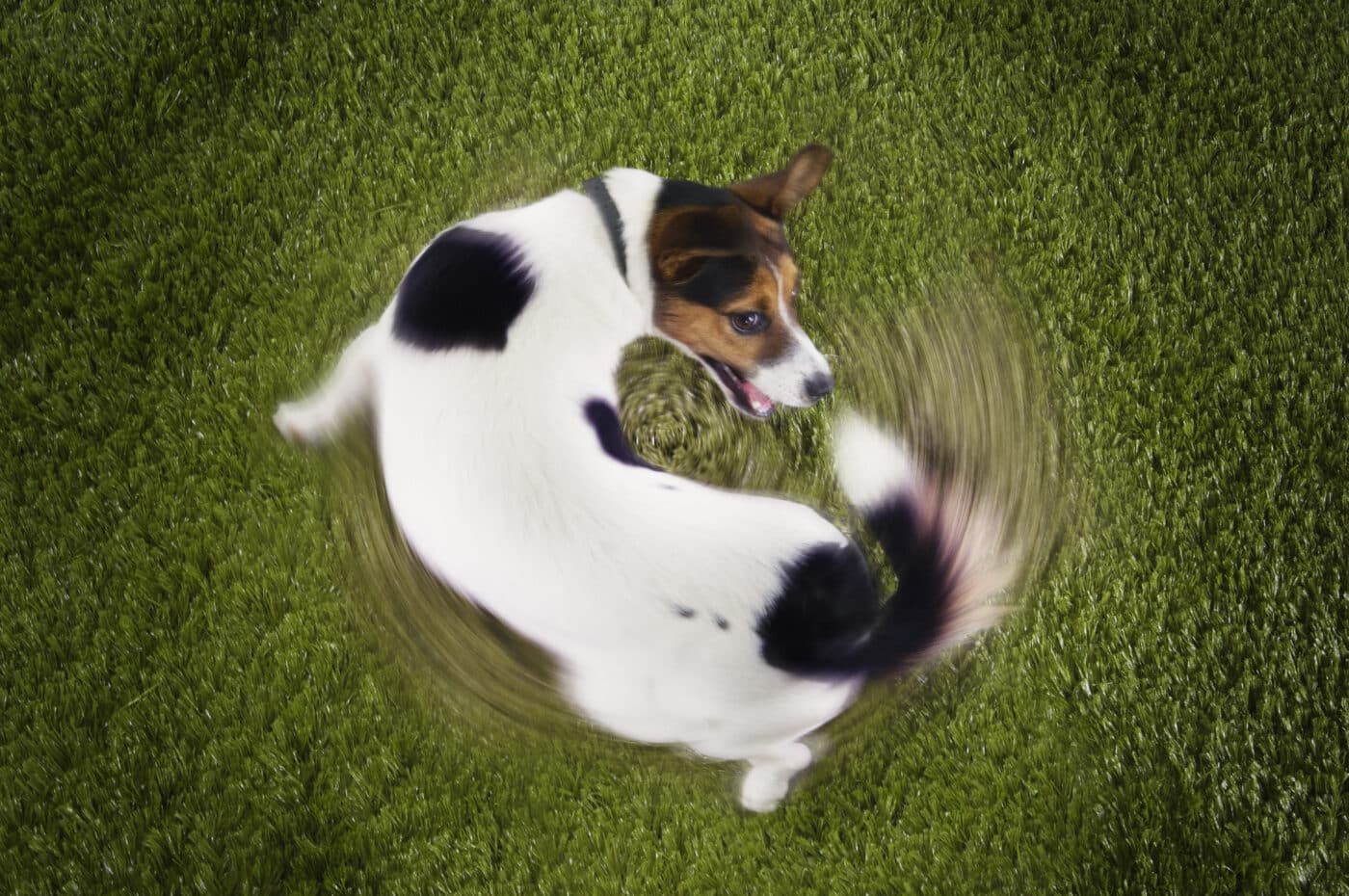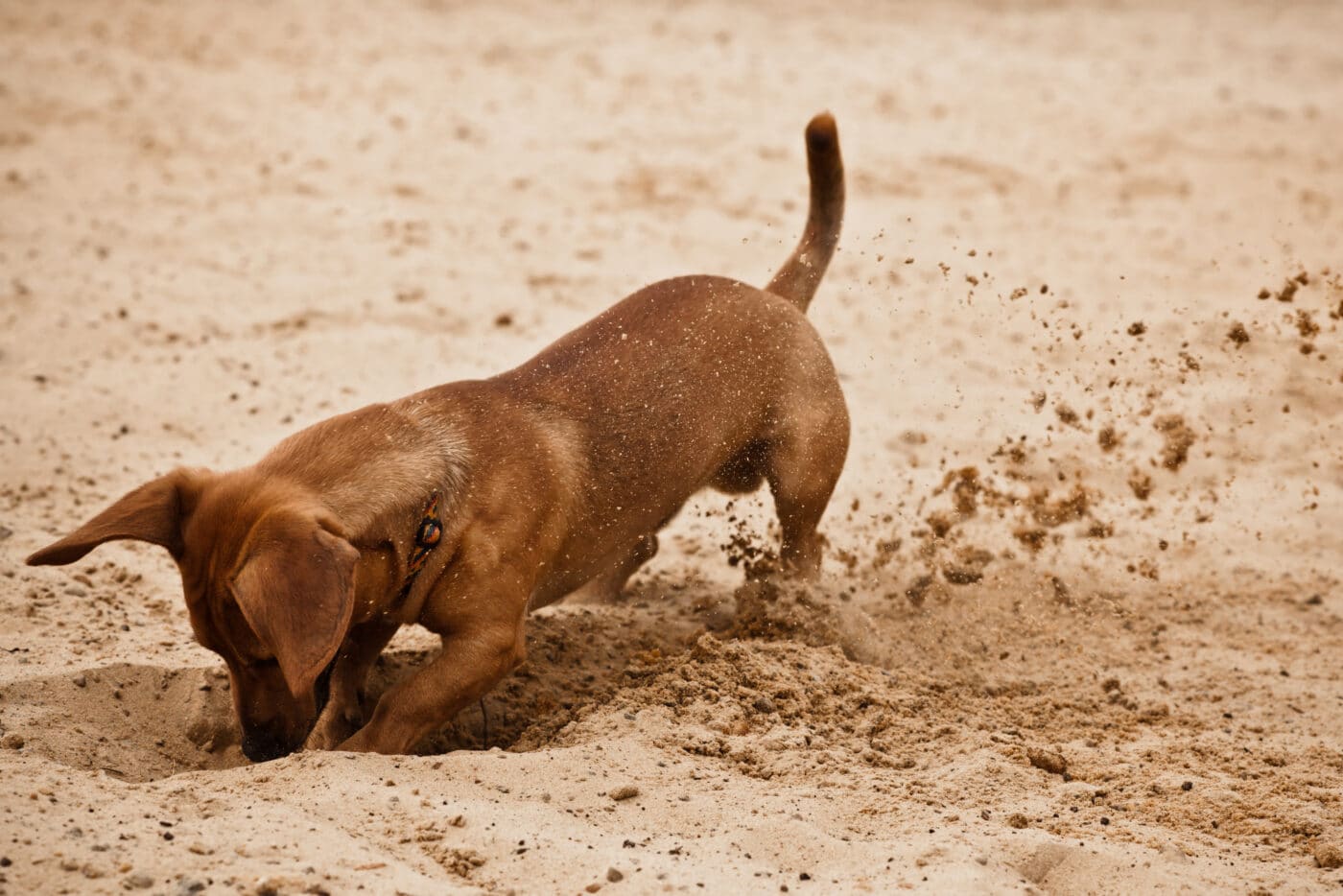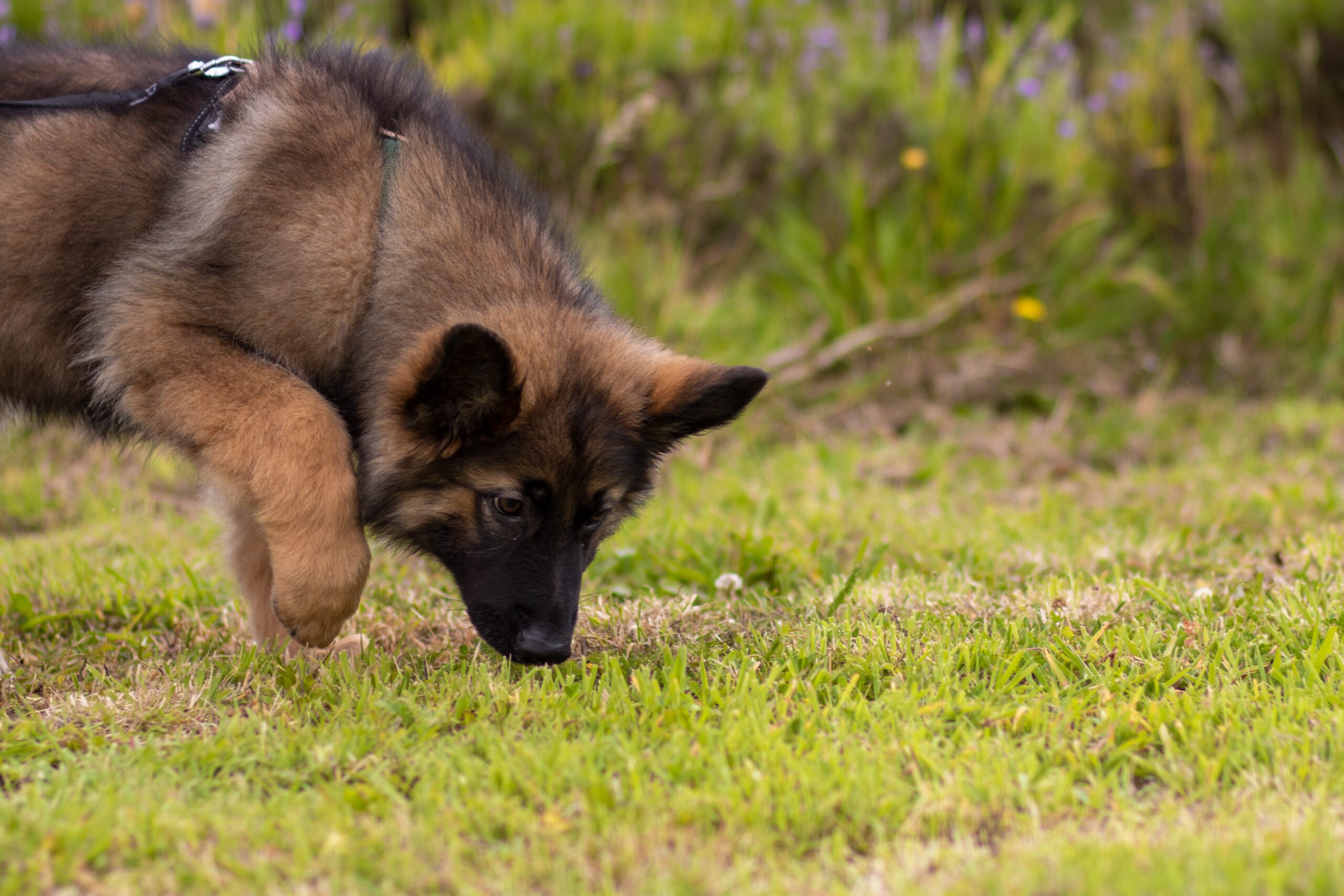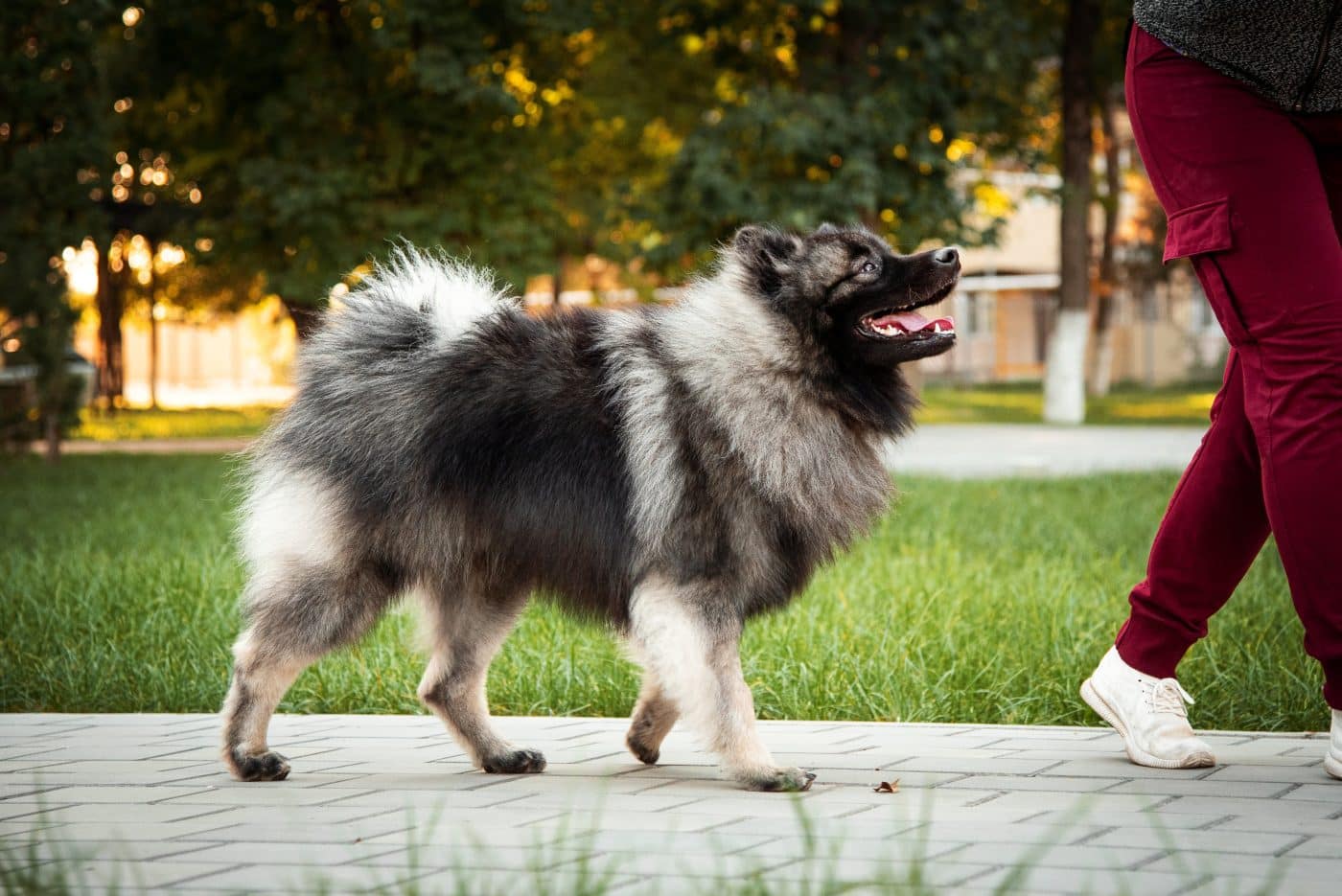 Shutterstock
Shutterstock
Dogs often display behaviors that may seem strange or amusing, but many of these actions are driven by deep-rooted instincts. Understanding the reasons behind these behaviors not only helps us appreciate our dogs more but also strengthens the bond we share with them. What might appear as odd habits are often their way of communicating, entertaining themselves, or staying true to their instincts. By recognizing the purpose behind these quirks, we can better understand our furry companions and meet their needs.
Tail Chasing
 Shutterstock
Shutterstock
Tail chasing can seem like a silly habit, but it’s often a sign of boredom, curiosity, or even stress. Dogs, especially puppies, may chase their tails as part of their developmental process, learning about their bodies and the world around them. It can also be a way to release excess energy or to entertain themselves when they’re alone or not getting enough stimulation. In some cases, it may also be a sign of anxiety or other behavioral issues if done excessively.
Rolling in Smelly Things
 Shutterstock
Shutterstock
Rolling in smelly substances, such as mud or animal feces, may seem like a dirty habit, but it has an evolutionary purpose. In the wild, dogs would roll in strong-smelling substances to mask their own scent from potential prey or predators. This behavior was a survival tactic that helped them blend in and go unnoticed. Domesticated dogs, while no longer hunting for food, may still indulge in this behavior, likely because it’s an instinctive action, or simply because they enjoy the strange scents.
Sniffing Everything
 Shutterstock
Shutterstock
Dogs have an extraordinary sense of smell, and sniffing everything they encounter is a way for them to learn about their environment. Through their sense of smell, dogs gather information about other animals, humans, and even changes in the environment. Sniffing helps them navigate the world and understand what’s around them. While it might seem excessive or odd, this behavior is crucial for their mental stimulation and sensory exploration and is one of the key ways dogs process the world.
Digging
 Shutterstock
Shutterstock
Digging is another behavior that is deeply ingrained in many dogs and stems from their instincts. Dogs dig to create a comfortable spot for resting or to bury food, much like their wild ancestors did. Some breeds, such as terriers, are especially prone to digging due to their hunting background. In a domestic setting, dogs may dig for comfort, to release energy, or because they’re bored, making it essential to ensure they have enough mental and physical stimulation to curb this behavior.
Eating Grass
 Shutterstock
Shutterstock
Dogs eating grass is a behavior that might leave us scratching our heads, but it’s quite common and often harmless. Many dogs will occasionally munch on grass, and it may be a way for them to help with digestion or to induce vomiting when they feel nauseous. In some cases, dogs might just enjoy the taste or texture of grass. While this behavior is typically nothing to worry about, excessive grass eating may be a sign of an underlying health issue, so it’s worth keeping an eye on if it becomes frequent.
Sleeping in Tight Spaces
 Shutterstock
Shutterstock
It’s not unusual for dogs to seek out small, enclosed spaces to sleep, and this behavior is linked to their instincts. Wild dogs would seek shelter in caves, dens, or tight spaces to stay safe from predators and the elements. Domestic dogs retain this instinct and find comfort in small, cozy spaces where they feel secure. Whether it’s under furniture or in a closet, dogs often seek out these spots to feel safe and relaxed, particularly if they’re feeling stressed or anxious.
Following You Everywhere
 Shutterstock
Shutterstock
If your dog follows you around the house, it’s not just because they’re attached to you—it’s also a sign of their loyalty and instinctual pack mentality. Dogs are pack animals, and in the wild, staying close to the pack leader was vital for their survival. Domestic dogs carry this instinct with them, feeling a sense of security and comfort when they are near their owner. While it can sometimes feel overwhelming, this behavior shows just how much your dog trusts and depends on you.
Barking at Nothing
 Shutterstock
Shutterstock
Barking at seemingly nothing can be puzzling, but it’s often the result of a dog’s heightened senses. Dogs can hear frequencies and sounds that humans cannot, so they might be reacting to sounds like high-pitched noises or even vibrations in the environment. Additionally, dogs may bark to alert you to something they perceive as a potential threat, even if it’s not visible. In some cases, barking at nothing may simply be a sign of excitement or a way to get attention.
Shaking and Trembling
 Shutterstock
Shutterstock
When a dog shakes or trembles, it could mean a variety of things. While shaking is often associated with cold temperatures, it can also be a sign of excitement, anxiety, or fear. Dogs may shake in response to stressful situations like thunderstorms, car rides, or visits to the vet. Trembling can also indicate pain or illness, so it’s important to monitor if the behavior persists or seems out of the ordinary, as it may signal a medical issue that needs attention.
Licking Everything
 Shutterstock
Shutterstock
Licking is one of the most common behaviors exhibited by dogs, and it can serve many purposes. For puppies, licking is an early form of bonding with their mother, and they carry this behavior into adulthood as a way to show affection or submission. Dogs also lick to explore their environment, whether it’s your face or an interesting object. While licking is often a sign of affection, excessive licking may be a response to anxiety, boredom, or even a medical issue, so it’s important to watch for patterns.
Chewing on Furniture
 Shutterstock
Shutterstock
Dogs, especially puppies, love to chew on things, and this behavior has several reasons behind it. Chewing helps alleviate the pain of teething for puppies, and it continues as an instinct for adult dogs to keep their teeth clean and their jaws strong. Chewing also serves as a way to release pent-up energy or relieve boredom. However, when dogs chew on furniture or other inappropriate objects, it can be a sign of separation anxiety, a lack of proper stimulation, or an inability to distinguish between acceptable chew toys and household items.
Rolling in Feces or Dead Animals
 Shutterstock
Shutterstock
While it’s a behavior many owners find repulsive, rolling in feces or dead animals is deeply rooted in instinct. Dogs, especially in the wild, would roll in strong smells to mask their scent, which helped them hunt or avoid predators. The practice of scent masking was a survival tactic that allowed them to sneak up on prey or blend into their surroundings. Even though domestic dogs no longer need to hunt, this behavior persists as a result of their evolutionary instincts.
Butt Scoot
 Shutterstock
Shutterstock
The “butt scoot,” where a dog drags its rear end along the ground, is often a sign of discomfort or irritation. While it may seem funny, it can be a sign of impacted anal glands, worms, or allergies. When dogs experience discomfort in their anal area, they may scoot to try to relieve the itching or irritation. If your dog is frequently scooting, it’s a good idea to check for potential health issues and consult a vet if needed.
The Mystery Of The Barking Dog Solved
 MidJourney
MidJourney
Some dog behaviors may appear odd, but they are often driven by instincts that serve important purposes. By understanding these quirks, we can provide better care and create an environment where they feel secure and happy. These habits help them communicate, entertain themselves, or stay true to their nature. It’s all part of what makes them so unique and lovable. So, when your dog does something that seems strange, just remember—it’s likely an instinct that helps them feel comfortable and connected to their world!

 1 month ago
23
1 month ago
23


















 English (US) ·
English (US) ·